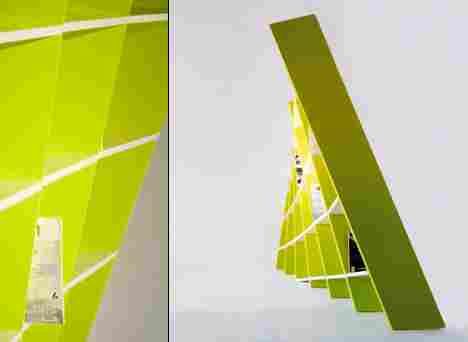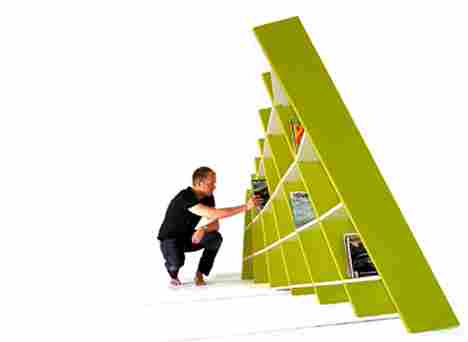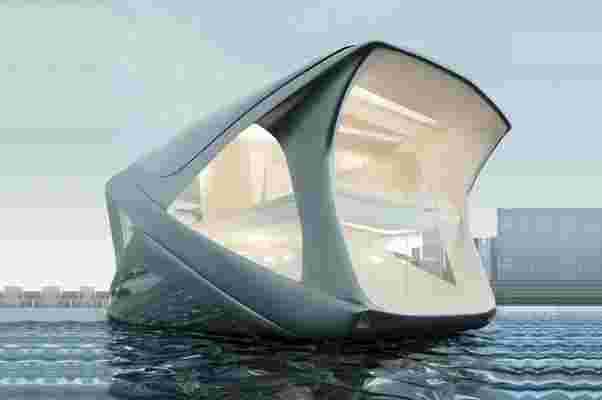
Global warming is no longer a myth lurking in the background – it is our reality and its effects are being felt across the world, the latest being the series of heatwaves hitting the USA and Canada as we speak. Tiny homes are the trend in many ways – be it from reducing the amount of space needed, from a population and overflowing cities point-of-view to increasing portability of the living space. The increase in work from home culture has re-connected us with our wanderlust and proved that the quality of work is not dependent on our office space. The tiny homes shown here range from futuristic designs to innovative, sustainable solutions that float to keep you safe – be it pollution or rising sea levels!
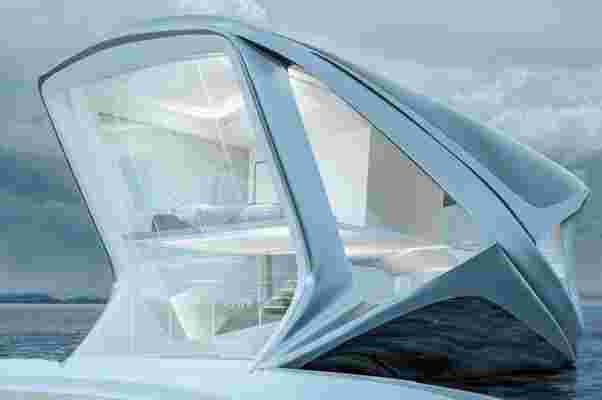
{"type":"video","version":"1.0","provider_name":"Vimeo","provider_url":"https://vimeoom/","title":"G6-2A-21MBCONIV9337054","author_name":"Red Dot Design Award","author_url":"https://vimeoom/reddotchannel","is_plus":"0","account_type":"pro","html":"<iframe src="https://player.vimeoom/video/360992576?h=31f298d2b8&dnt=1&app_id=122963" width="1050" height="591" frameborder="0" allow="autoplay; fullscreen; picture-in-picture" allowfullscreen title="G6-2A-21MBCONIV9337054"></iframe>","width":"1050","height":"591","duration":"110","description":"","thumbnail_url":"https://i.vimeocdnom/video/815316965-f20aa1e01d9dd0558241986d8a9653bb4307dd8e7aa60c0c7406ba42ee1be6c5-d_960","thumbnail_width":"960","thumbnail_height":"540","thumbnail_url_with_play_button":"https://i.vimeocdnom/filter/overlay?src0=https%3A%2F%2Fi.vimeocdnom%2Fvideo%2F815316965-f20aa1e01d9dd0558241986d8a9653bb4307dd8e7aa60c0c7406ba42ee1be6c5-d_960&src1=http%3A%2F%2Ff.vimeocdnom%2Fp%2Fimages%2Fcrawler_play.png","upload_date":"2019-09-19 04:05:39","video_id":"360992576","uri":"/videos/360992576","arve_cachetime":"2021-09-27 04:42:08","arve_url":"https://vimeoom/360992576"}
The idea of the Ocean Community vessel is to extend a city’s coastline. By existing not more than 800 meters from the coast of a city, the dwellers of the Ocean Community can easily make their way to the city to access facilities and enjoy a normal city life before heading back to their sea-based home. “The creation of these new structures will serve as fully functional living spaces connected with existing land infrastructure so that new ocean communities become a natural extension of coastal cities,” says Morsztyn, designer of the Ocean Community concept.
The Z-Triton Electric Houseboat was created to serve as an alternative to the traditional camper. It is comfortable enough to house two adults for a weekend getaway, and the choice of land or water is up to the travelers. The amphibious nature of the modern camper fits into the flexible lifestyle we lead today, especially since air travel is not on the cards anytime soon. It is opening up a lot of avenues for local trips in less popular/offbeat locations. The durable houseboat measures 3.6 meters in length, 1.2 meters in width, and 1.55 meters.
{"title":"Anthénea - La 1ère suite d’hôtel éco-luxe sur l’eau","author_name":"Anthénea","author_url":"https://www.youtubeom/channel/UC6vXWMuuriXOTZcUhrjJeeg","type":"video","height":"591","width":"1050","version":"1.0","provider_name":"YouTube","provider_url":"https://www.youtubeom/","thumbnail_height":"360","thumbnail_width":"480","thumbnail_url":"https://i.ytimgom/vi/DTOG4OsXYC8/hqdefault.jpg","html":"<iframe width="1050" height="591" src="https://www.youtubeom/embed/DTOG4OsXYC8?feature=oembed" frameborder="0" allow="accelerometer; autoplay; clipboard-write; encrypted-media; gyroscope; picture-in-picture" allowfullscreen></iframe>","arve_cachetime":"2021-07-03 23:06:49","arve_url":"https://youtu.be/DTOG4OsXYC8","arve_srcset":"https://i.ytimgom/vi/DTOG4OsXYC8/mqdefault.jpg 320w, https://i.ytimgom/vi/DTOG4OsXYC8/hqdefault.jpg 480w, https://i.ytimgom/vi/DTOG4OsXYC8/sddefault.jpg 640w, https://i.ytimgom/vi/DTOG4OsXYC8/maxresdefault.jpg 1280w"}
Anthénea is a UFO-shaped water suite made in France by veteran designers, engineers, and naval architects, whose vision was to create a nomadic vessel for eco-conscious tourists. It was a project born from the dreams of Jean-Michel Ducancelle, a naval architect, who was inspired by James Bond’s floating pod in ‘The Spy Who Loved Me’ (1977). The 50 sqm pod has three living spaces – a living area, a sleeping zone, and a lounge area that features a 360° solarium on its roof for 12 people. All interior elements are entirely made from sustainable materials. Anthénea adapts to a wide temperature range (-30°C to +40°C), and its stabilizing ballasting keeps the seasickness at bay! Coastlines are often overburdened with tourism, and Anthénea offers an ecological way to lighten that load while promoting sustainable travel, which is our ultimate future.
This Eco-Floating Hotel in Qatar is raising the bar for eco-friendly travel and tourism! Powered by wind + solar energy, it also features tidal sustainability mechanisms and a revolving restaurant to give you ALL the best views. Designed by Hayri Atak Architectural Design Studio (HAADS), the hotel would span over 35,000 sq m (376,000 sq ft) and house 152 rooms. The giant glass donut-shaped structure has a lush green cover integrated into its exterior and a mesmerizing indoor waterfall with a huge vortex-like glass roof. Sustainability is at the core of this project, and all of the design details are centered around it. For example, the vortex shape of the roof will actually be used to collect rainwater for irrigation and more, while solar panels + wind turbines will provide clean energy.
{"title":"Maldives Floating City","author_name":"DutchDocklands Maldives","author_url":"https://www.youtubeom/channel/UCOrwxi3kj67kVSg0dlIBzOA","type":"video","height":"591","width":"1050","version":"1.0","provider_name":"YouTube","provider_url":"https://www.youtubeom/","thumbnail_height":"360","thumbnail_width":"480","thumbnail_url":"https://i.ytimgom/vi/z4Zo5Nr7Afc/hqdefault.jpg","html":"<iframe width="1050" height="591" src="https://www.youtubeom/embed/z4Zo5Nr7Afc?feature=oembed" frameborder="0" allow="accelerometer; autoplay; clipboard-write; encrypted-media; gyroscope; picture-in-picture" allowfullscreen></iframe>","arve_cachetime":"2021-07-03 11:37:19","arve_url":"https://youtu.be/z4Zo5Nr7Afc","arve_srcset":"https://i.ytimgom/vi/z4Zo5Nr7Afc/mqdefault.jpg 320w, https://i.ytimgom/vi/z4Zo5Nr7Afc/hqdefault.jpg 480w, https://i.ytimgom/vi/z4Zo5Nr7Afc/sddefault.jpg 640w, https://i.ytimgom/vi/z4Zo5Nr7Afc/maxresdefault.jpg 1280w"}
According to NASA, Maldives is arguable the lowest-lying country with an average elevation of just 3.3 feet above sea level, which means the island republic will soon have to rely on sustainable housing alternatives. The archipelago nation in the Indian Ocean has 1190 islands, and 1000 would be submerged at the current rate of sea-level rise. This project is called Maldives Floating City (MFC) and will be constructed just minutes away from Male, the capital. The team comes from a Netherlands-based studio Dutch Docklands, a world-renowned leader in floating infrastructure. MFC’s shape will be series of honeycomb-like hexagonal maze rows inspired by the Brain coral. It will feature thousands of waterfront residences floating along a flexible, functional grid across a 200-hectare lagoon. The system of floating rows is anchored to a ring of islands that form the base and the stabilizing breaker wall for all the structures – this was the primary reason for placing MFC in an ideally suited small lagoon.
This two-story home crafted from shipping container materials and Sapele wood is designed to rise and fall with the natural changes in sea level as we battle climate change. Kairu is a variation of the Japanese word for frog which is an homage to the water-based home. The area is still recovering from Hurricane Sandy even after a decade and could use innovative reconstruction. That is where Kairu House comes in as an affordable, sustainable, and resilient home. It will become the primary residence for the founder and principal architect of Rekstur and his family. The main building is made of two 40-feet-tall shipping containers. The repurposed containers are cut in half (diagonally) and stacked on top to make separate floors. The two steel sectional barges were welded together to create a single platform for the house docked at a local marina.
Forget waterfront offices, what about an office literally on the water? Think of Enclaves as office meets lazy river (productivity levels not included with the structure). Remote work and flexible lifestyle have seen a boom thanks to the pandemic, which has led to many innovative designs like this floating office pod which is a low-impact concept offering the best of views with maximum privacy for focus. Designer Agnieszka Białek who made this zen office pod, is a graduate of the Academy of Fine Arts in Kraków, Poland, which explains the picturesque theme. Białek was inspired by her usual pandemic strolls (which were the highlight of all our lives) along the Vistula River and thought of how cool it would be to have floating co-working spaces that would have no footprint on the land. You will have to use a kayak to get to the pod, effectively eliminating any disturbance people. The pods will be designed to be active day or night and can be rented by the hour to host meetings, change the scenery or just get into a deep focus zone!
Designed by Dutch architect Marlies Rohmer, Waterbuurt sets the stage as a water-based solution for Holland’s modern housing needs. The Netherlands actually means, ‘the low-lying country,’ indicating the country’s close proximity to water. In fact, much of the country’s land is either below sea level or just slightly above it. In order to go with the flow of the approaching tide and avoid the surging population in urban centers, Waterbuurt adapts to the rising sea levels and finds calm away from the congestion of the city. Upon completion, 18,000 homes will comprise Waterbuurt, but for now, more than 100 of them float on jetties. The houses, which are permanently fastened to steel pylon-enforced moorings, resemble attractive shipping containers and share more in appearances with land-based housing than the familiar houseboats dotted along Amsterdam’s canals.
Considering the accelerated rise of global sea levels, Copenhagen Islands are only the beginning of how urban design will adapt to the changing climate by optimizing the water bodies as sustainably as possible. “To renew the proud traditions of the Danish harbor life, by strengthening the social cohesion and awareness of the maritime life in and around the harbor,” says Studio Fokstrot as they explain the idea behind the floating parks. The islands are activity-friendly and enable visitors to enjoy boating, swimming, kayaking, picnics, performances, events, and more which could also boost tourism or simply make things better for citizens with travel being on the down-low this year. These programs can also be customized for seasons – summer is when the islands will be docked away from each other to create space for water activities while during winter the islands will huddle up closer for more engaging performances.
The Lilypad is a luxury villa designed by Chuck Anderson and is anchored just north of Sydney’s Palm Beach. Anderson is a boat enthusiast so it is no surprise that he created a floating house! This beautiful Airbnb is also eco-conscious, it is completely solar-powered and is slowly helping us pivot towards sustainable travel. The exterior of the house is made from timber and includes an open living area, a wine cellar, a sleeping loft, and, of course, a bathroom (for all that wine that we will consume post quarantine on our holiday!). To feel fancy, you have alfresco dining (which means you can eat your food while enjoying the breeze and sun when going outside is cool again) and sunbathing area on the lower level which also boasts of an expansive terrace.
Tiny home setups that prove why microliving will be the next big trend: Part 3
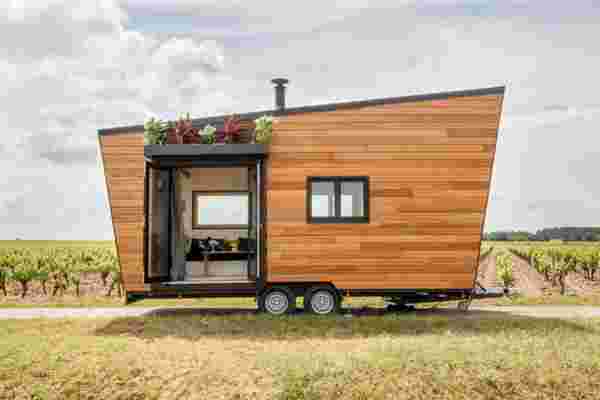
Staying indoors and sanitizing every surface of my house is an easy way to drive anyone (especially someone like me who hates clutter) nuts! At times, I often wonder how it would feel if I had fewer possessions – more meaningful perhaps but also lesser stuff to clean. It was this train of thought that had me researching the latest millennial trend to hit our lives just before COVID-19 stopped our travel plans – tiny homes. With minimalism trending at unforeseen levels, it is relatively easy to see the appeal of these small homes. Add to that the growing population, shrinking apartment sizes, and the lack of garden spaces, hitching a tiny home and driving into the sunset sounds like a pretty good idea. The collection here showcases great home designs that are portable, packable, and with their impeccable interiors – you’ll find yourself planning a tiny home for yourself in no time!
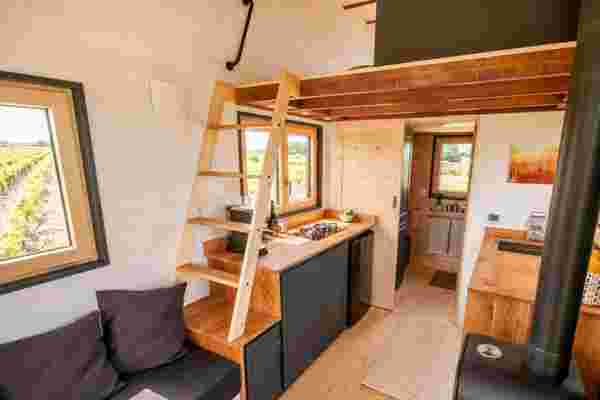
Laëtitia Dupé of Tiny House Baluchon is designed for a French couple, this new abode finds itself in the French Alps, offering great views and ample space to live in.
Measuring at 9 feet wide, 12 feet high, and 16 feet across, the Mono Cabin by Drop Structures is literally homely. I mean literally. Shaped like the icon for a home, this pre-fab cabin comes ready to live in and can be carried and placed literally anywhere your heart desires.
Meet the Birdbox , a prefabricated shipping container-like cabin by Livit that offers one-of-a-kind escapes to lush destinations surrounded by nature. The cabins are simple, rectangular structures with huge circular and oval windows to give you a larger than life view of nature. Just like the exterior, the interior also has minimal decor which makes for a cozy space with a queen bed and a handful of chairs. The Birdboxes come in two sizes currently – the “Mini” at 10.5’ x 7.2’ x 7.2’ “Mini” and the “Medi” at 16.7’ x 7.87’ x 7.87’.” There’s also a separate “Birdbox Bathroom” which features a black tint one-way glass floor-to-ceiling window.
The daybed, living room, and kitchen in Modern Tiny Living’s Allswell model is a designer’s dream, and since it was being built for Wal-Mart’s HomeGoods brand – they spared no expense! Now if only I could find the nearest Walmart that stocks these…
The size of a bedroom, the Nolla cabin by Robin Falck is perfect for the idyllic holiday. Its design, aside from being highly characteristic, is also comfortable, and sustainable. Named after the Finnish word for zero, the Nolla cabin’s purpose is literally to give you a zero-worry, zero-emission holiday. Built with a tent-like shape, the Nolla aims at giving you the very same feeling, when sunlight creeps into its interiors through the triangular glass facade on the front. Made entirely from local pine and plywood, the Nolla doesn’t use any fasteners to hold it in place, but rather, pieces together like a massive puzzle. The cabin can be transported and assembled without the need for heavy machinery, and it comes with adjustable pedestals, giving you the freedom to set the Nolla up on any sort of terrain.
The Pacific Harbor is a tiny house built on a 30’x8.5’ triple axel Iron Eagle trailer – compact, convenient, and classy. The interiors are kept light and breezy to manifest the feeling of spaciousness. The tiny home includes a downstairs flex area that can be turned into a bedroom or home office, a sleeping loft in the back, and stainless steel appliances in the kitchen.
Danish retailer Vipp is now offering guests the opportunity to stay in a prefabricated micro dwelling in a Swedish forest. The cabin provides a panoramic view of the surrounding landscape from the open-plan living area, thanks to large sliding windows. A bedroom is tucked away in one of two chimney-like chambers protruding from the roof, with the other containing a skylight.
Nags Head, a 20 ft. tiny house based upon Modern Tiny Living’s Point model is the perfect getaway tiny house. Lots of light, lots of fresh air, and lots of opportunities for adventures!
Cabin One is described as a passionately designed home for the future and its minimalist look certainly appeals to millennials who will now be able to buy homes given that the lockdown is making them spend less on avocados ( you know what I am talking about ). What I love about Cabin One is that it promotes flexible micro-living through its modular build. You can customize the 25 square meters of space as per your needs – it could be a beautiful cabin for one, holiday home for two or a quirky office space that stands in between an Airbnb and WeWork (given that the future is all about working remotely, did I just come up with the next million-dollar startup?). “We have reduced the complexity of the construction industry to three important elements: comfort, quality, and user experience. We do not think in square meters, we think in features,” says Simon, Cabin One’s designer.
The Nano is the smallest tiny house built by Modern Tiny Living so far. Its trailer is only 3,3m long but the house contains all you need.
Comprising of two bedrooms this tiny home by Tiny House Baluchon is perfect for a nuclear family. Featuring wooden accents, a set of stairs in the home lead to the upper section, where a comfy bed awaits!
Inspired to take one of these houses and run away but want some more inspiration? Look at more tiny homes designs from Part 1 and Part 2 of this collection! Although we implore that you set up your home and maintain social distancing wherever you stay!
A Playful Meeting Between Wall and Floor
Those are the words of ADDI products, Kalmar, Sweden based design group who takes the wild step, not just forward, but to the side as well. They push the bookcase over. And why not! You’ve seen the crazy magazine racks for sale on the sidebar of Yanko there, right? Those are cool! Addi’s bookcase, called “Billy’s Brother”, is totally Radikal Arkitektur.
According to Addi, “Billy’s Brother can be seen in the Premio Vico Magistratti catalog for DePadova in cooperation with Designboom.”
Those books look to be falling off but POW! -they’re more stable than a normal case.
Take THAT, gravity. – Addi Design Group.
Designer: Addi Design Group
